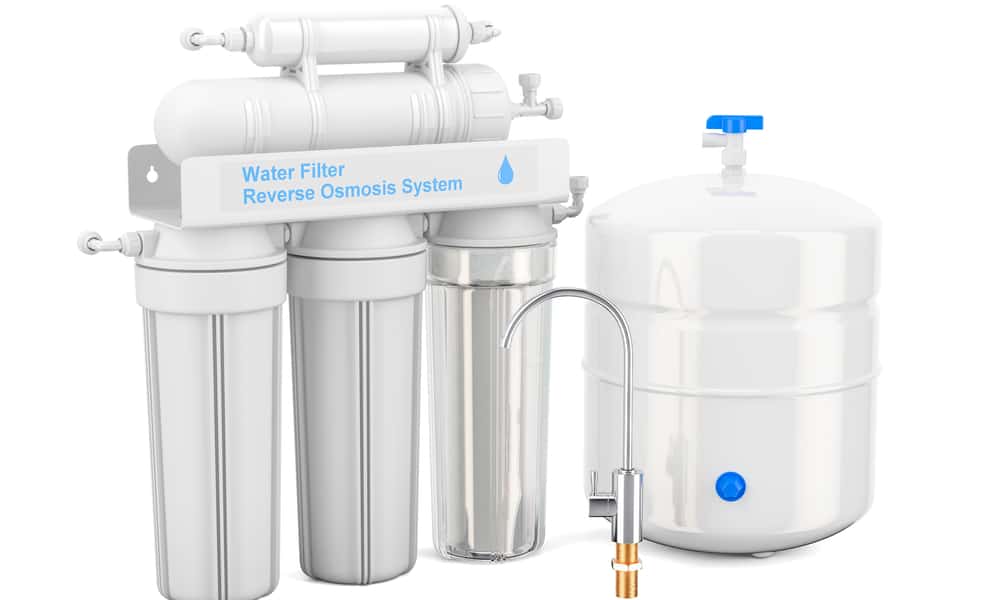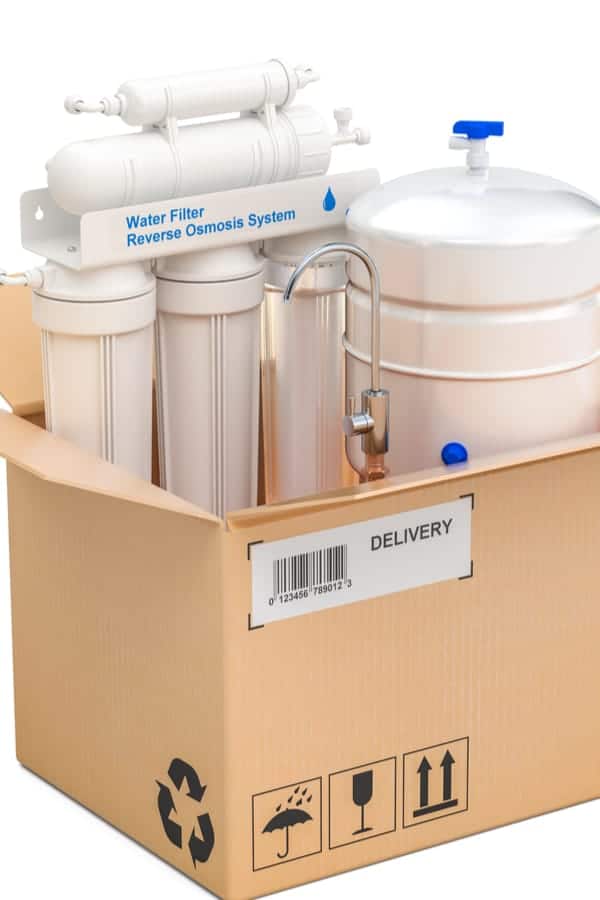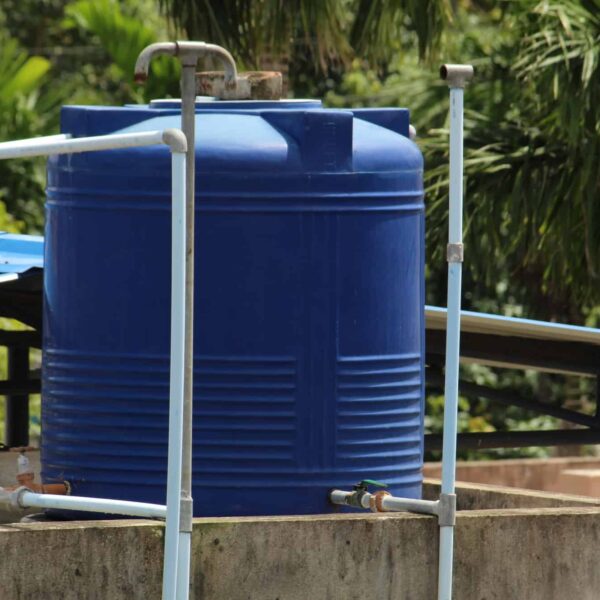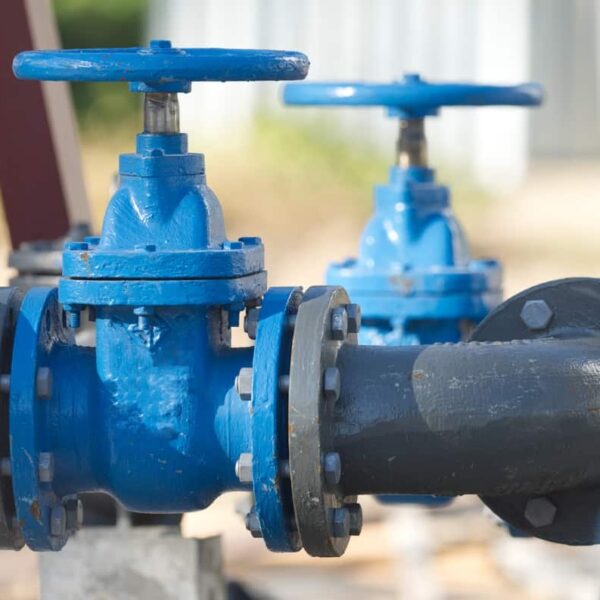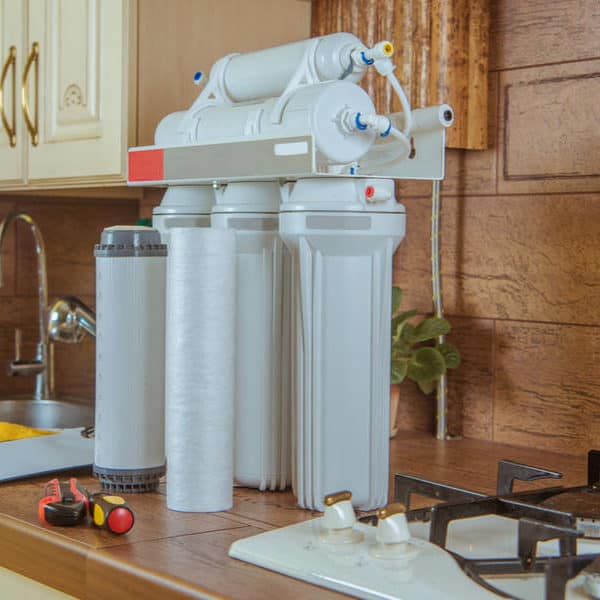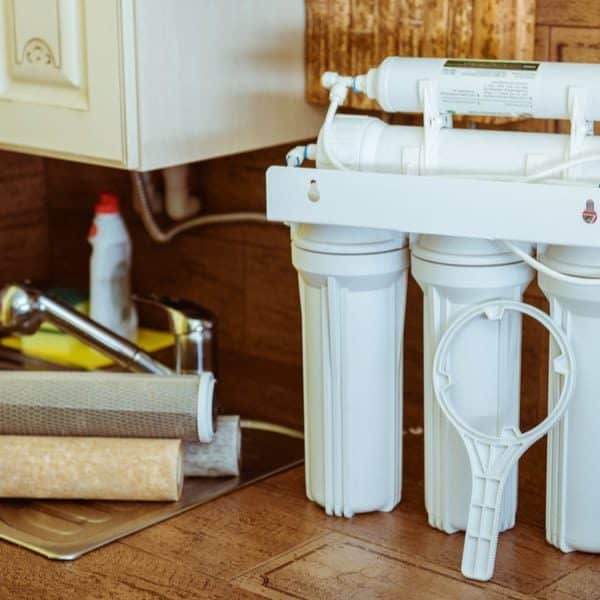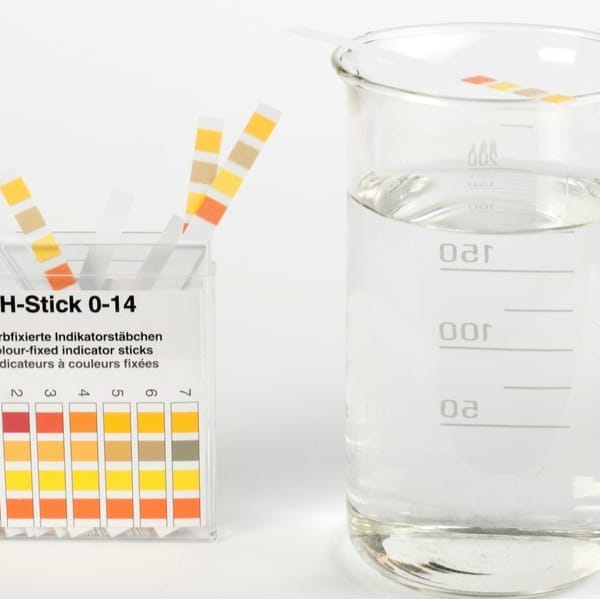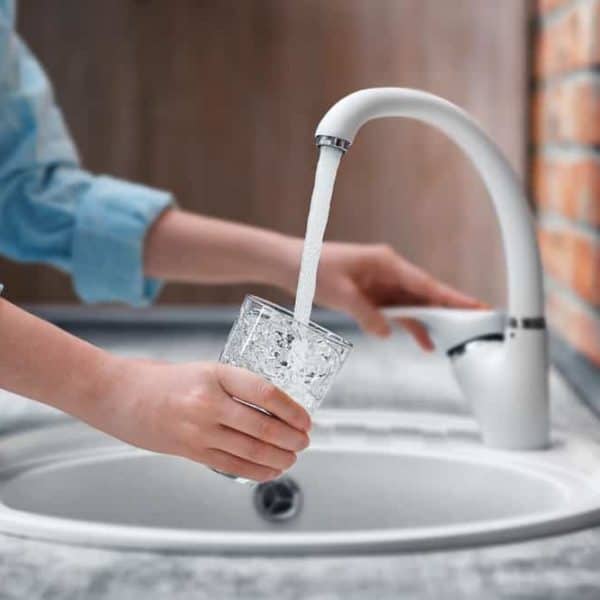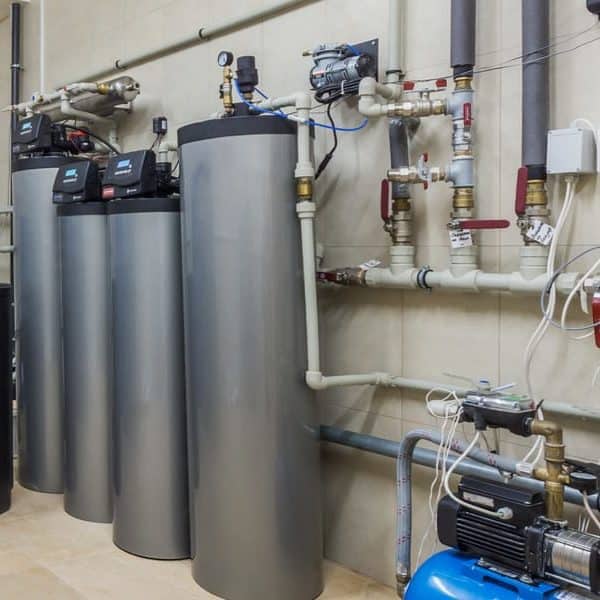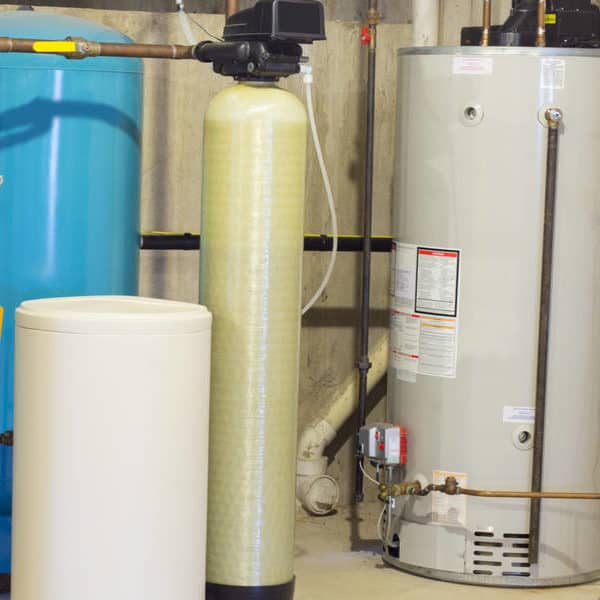Unfortunately, the water we consume is full of various mineral constituents, which can be hazardous for human health. On the other hand, their molecules are physically larger than water ones, and it is not too hard removing them by the five-stage reverse osmosis filtration process.
The high-quality reverse osmosis system can remove from 90 to 99.99% of contaminants from the drinking water supply. The question is whether the removal of minerals necessary for the normal functioning of our body is good for our health. Let’s see.
What can the reverse osmosis system remove from water |
|||
|
Ions and metals |
Organic chemicals | Pesticides |
Particles |
|
94 – 98% Iron |
Trichloroethylene* | Heptachlor | Cryptosporidium |
| 94 – 98% Magnesium | Benzene* | Endrin |
Asbestos |
|
94 – 98% Calcium |
Dichlorobenzene* | Pentachlorophenol | Protozoan cysts |
| 85 – 95% Potassium | Carbon tetrachloride* | Lindane |
|
|
85 – 94% Sodium |
Trihalomethanes* | 1,2,4-trichlorobenzene* | |
| 95 – 98% Zinc | Toluene* | Atrazine* |
|
|
95 – 98% Mercury |
2,4-D* | ||
| 92 – 96% Arsenic |
|
||
|
94 – 96% Selenium |
|||
| 95 – 98% Lead |
|
||
|
96 – 98% Nickel |
|||
|
94 – 98% Manganese |
|||
|
95 – 98% Barium |
|||
|
95 – 98% Cadmium |
|||
|
85 – 92% Chloride |
|||
|
60 – 75% Nitrate |
|||
|
96 – 98% Sulfate |
|||
|
96 – 98% Phosphate |
|||
|
85 – 92% Fluoride |
|||
|
84 – 92% Cyanide |
|||
|
Copper |
|||
|
Silver |
|||
|
Aluminum |
|||
|
Radium |
|||
|
Fluoride |
|||
|
Chromium |
|||
|
Chlorine* |
|||
|
Radon* |
|||
*The only way to remove these contaminants is if your reverse osmosis system has a built-in carbon filter
What Kind of Water Is Best for You
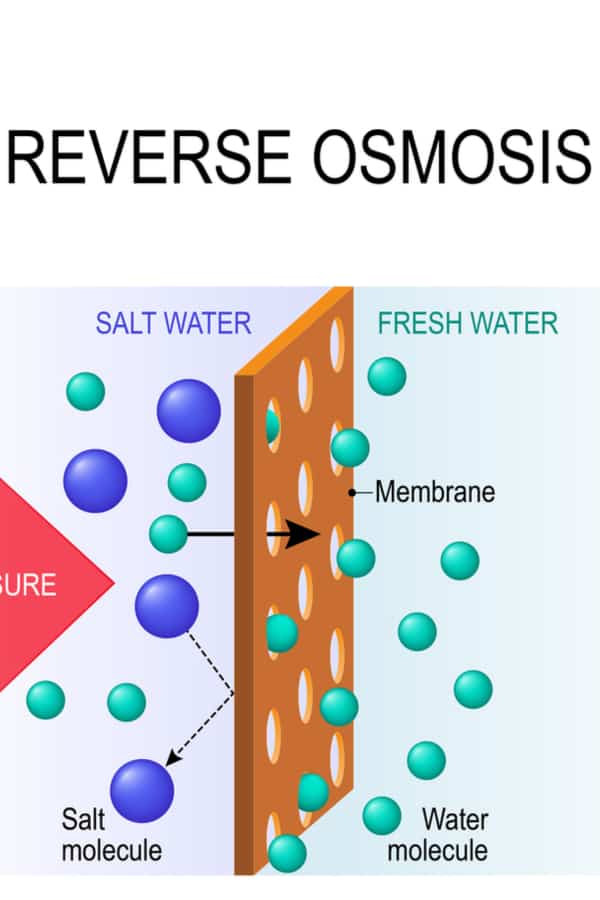
It seems that you should avoid regular consumption of drinking water produced by reverse osmosis without a minimum amount of essential minerals. Except for the awful taste of that water, lack of minerals may lead to adverse health effects.
On the other hand, the results of some relevant research show that using all minerals from hard tap water may be harmful to human health in the long run. They may accelerate the onset of degenerative diseases, including kidney and gall stones, arterial obstruction, diabetes, and arthritis.
So the secret is in moderation and choosing the right method for water purification. If you know all that, you can realize the importance of using the whole house water filter. Filtered water is healthy, pure, clean, and safe for consumption.
Drinking-Water Treatment Technologies Available for Households
There are a few household water treatments you can use. It is recommended to consult the environmental health group from your local health department before deciding which one to install in your home.
Filtration – It is a physical process that allows gases, liquids, and dissolved matter to adhere to the surface of the pores, and eliminates afterward. The efficiency of this process will depend on:
- The amount of contaminant
- Size of the particle of the contaminant
- The charges of the contaminant particles
Microfiltration – This system is highly effective because the pores of their filters are tiny, usually from 0.05 to 5 microns.
You should use it when it is necessary to remove bacteria and protozoa from water. Unfortunately, microfiltration can’t retain viruses and chemicals.
Ultraviolet system (with prefiltration) – It is a process of using ultraviolet light to reduce the number of viruses, bacteria, and protozoa in the water. However, this system is ineffective in removing chemicals.
Distillation system – It collects the condensed water vapor remaining after heating water to the boiling point. After separation of water, the contaminants remain as a precipitate.
This system is highly effective in removing viruses, protozoa, and bacteria, as well as chemical contaminants such as arsenic, cadmium, barium, sulfate, nitrate, sodium, chromium, and lead.
Water softeners – They reduce the water hardness by using ion-exchange technology. You can use them to remove calcium and magnesium, but also nitrates, sulfate, arsenic, iron, manganese, selenium, and chromium. You can’t use water softeners against viruses, bacteria, and protozoa, as well.
Reverse osmosis system – The system reverses the water flow in a natural osmosis process. Let’s see.
What Water Problems Does Reverse Osmosis Remove?
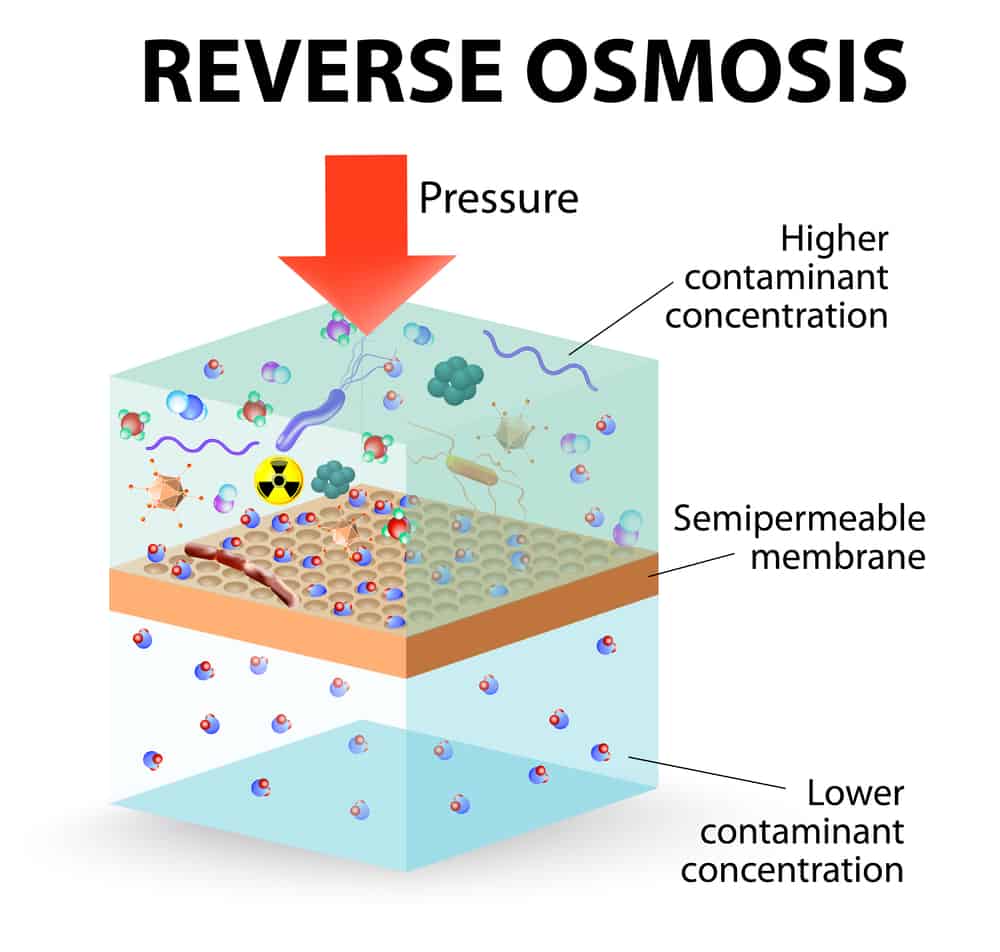
That way, we reduce the level of suspended particles and dissolved solids before drinking the water. Thanks to this process, the reverse osmosis system can remove common chemical contaminants from water, such as:
- Metals (including lead and iron, appearing in water due to old infrastructure and rusty pipes)
- Minerals (including calcium and magnesium, causing the problem with hard water in most cities)
They will also get rid of most microorganisms from water, including:
- Protozoa (Giardia and Cryptosporidium)
- Bacteria (Salmonella, E. coli, Campylobacter, and Shigella)
- Viruses (Rotavirus, Enteric virus, Norovirus, and Hepatitis A virus)
Keep in mind that various bacteria and a few protozoan parasites, including the most common cryptosporidium, originate in lakes and rivers. You can find them in the city water supply network that gets water from such sources.
However, most experts don’t recommend using the process of reverse osmosis to remove microorganisms. The reason is that they often cause deterioration of the membranes, which leads to contamination through pinhole leaks.
What Reverse Osmosis Doesn’t Remove
Reverse osmosis is a highly powerful technology, but it is not the best option for most homes. Its primary purpose is to solve two issues, including:
- Desalinating seawater
- Reducing specific chemicals from water, such as sodium, fluoride, radium, arsenic, and nitrates
Unfortunately, this excellent system can’t remove 100% of all contaminants, especially:
Pesticides – You definitely want to drink water without these hazardous chemicals. However, their particles pass freely through the semi-permeable membranes of this particular system since they are smaller than molecules of water. Therefore, adding carbon-based filters is necessary to ensure that the product water stays free of pesticide residues.
Herbicides – They are also molecularly small, which allows them to pass freely through membranes of the reverse osmosis system. Therefore, we need a carbon filter to prevent these carcinogenic chemicals from getting into the water stream.
Chlorine – Even though reverse osmosis removes 85 – 92% chlorine from water, a small amount of them may get through old and damaged membranes. Fortunately, it is a negligible quantity, which can’t harm human health.
Conclusion
The reverse osmosis system is highly complicated and requires installation of drain connections, pre-filters, pumps, and storage tanks, as well as regular testing and diligent maintenance.
Plus, the chlorine from municipal water supplies often damages and destroys the membranes, making it permeable to harmful chemicals. Therefore, you should inquire in detail whether this system is the right solution for your home.
